In 2019 Glacier Bay National Park paid to have LIDAR mapping data collected for about a third of the park. Last summer the processed data were delivered and have now started to appear online for downloading. Most of the data are good quality (6.14 points/meter²) and the area around Park Headquarters and two areas of the outer coast (Pacific coast) are better quality (16.52 points/meter²).
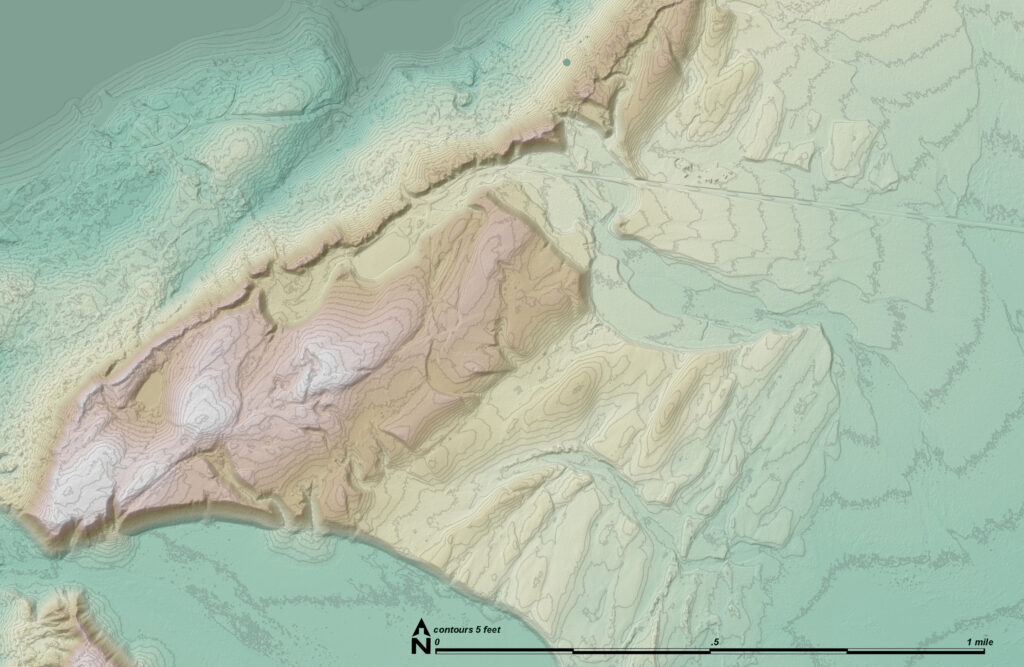
I learned about the availability of the data from Richard Carstensen who used it to make a map of the outwash channel through the peak of the 1750 terminal moraine near Park Headquarters (Figure 1). Transforming the LIDAR data into images like this requires a GIS program and some practice. The data are available for free from a USGS site and some are at a private site (a free account is required and an .edu address or other credentials make getting an account easier). I have not yet found a site with a viewer that allows you to see images made from all the new data.
Richard’s map inspired me. I set out to learn whether I could make maps like that from the new LIDAR data using a freeware GIS program (QGIS). The answer is yes, sort of. I have downloaded the “tiles” of LIDAR data near my Glacier Bay study sites in Muir Inlet and made similar maps. I have lots more to learn before my images match the pleasing quality of Richard’s map.

Richard’s map and all of the images below are “bare earth” models of the terrain. They represent the soil or rock surface with no vegetation and reveal patterns of glacial deposition and erosion that have been hidden for decades or centuries. The colors are arbitrary and vary with elevation. Richard’s map (Figure 1) was made with the higher quality LIDAR data which is not available for any of the images below.
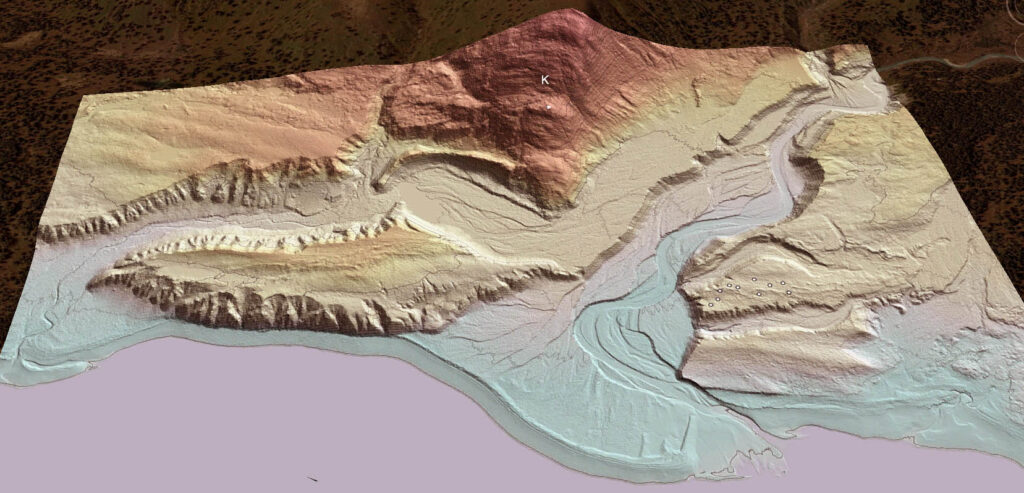
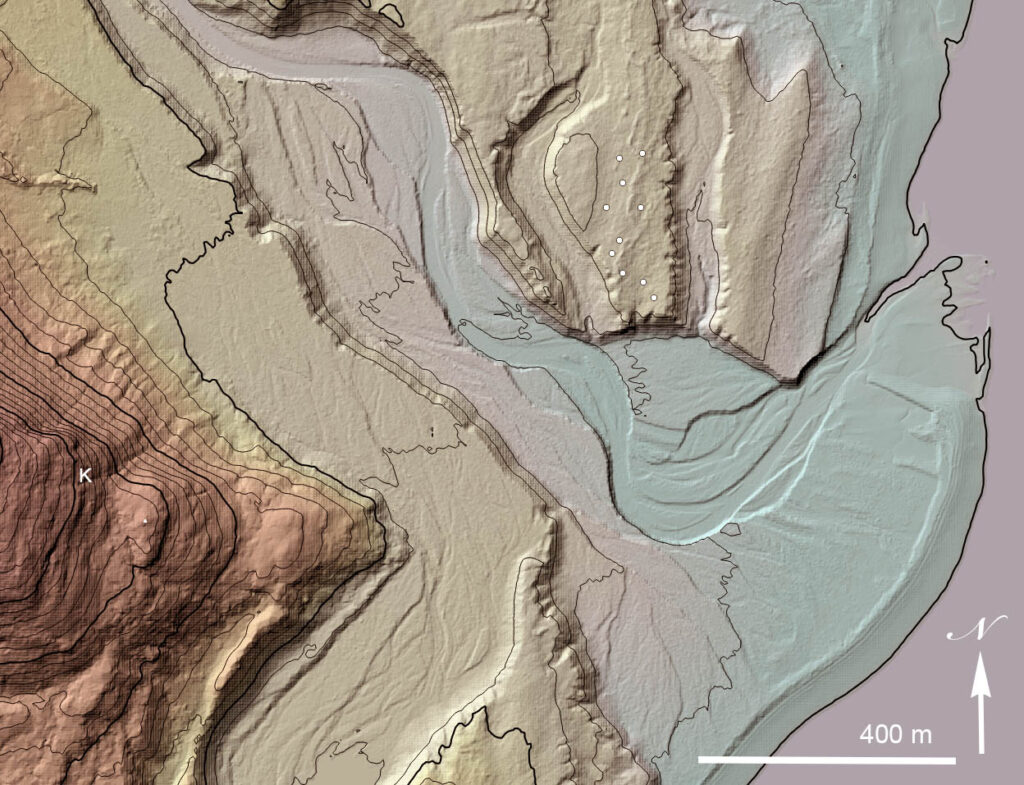
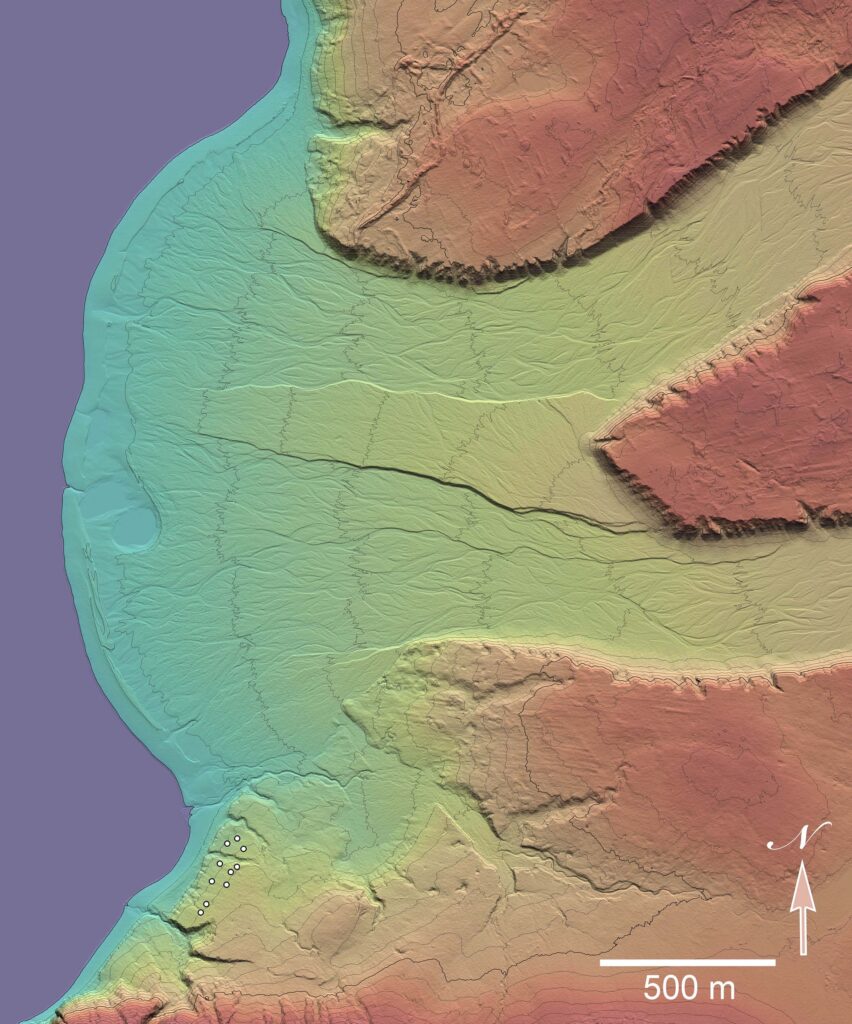

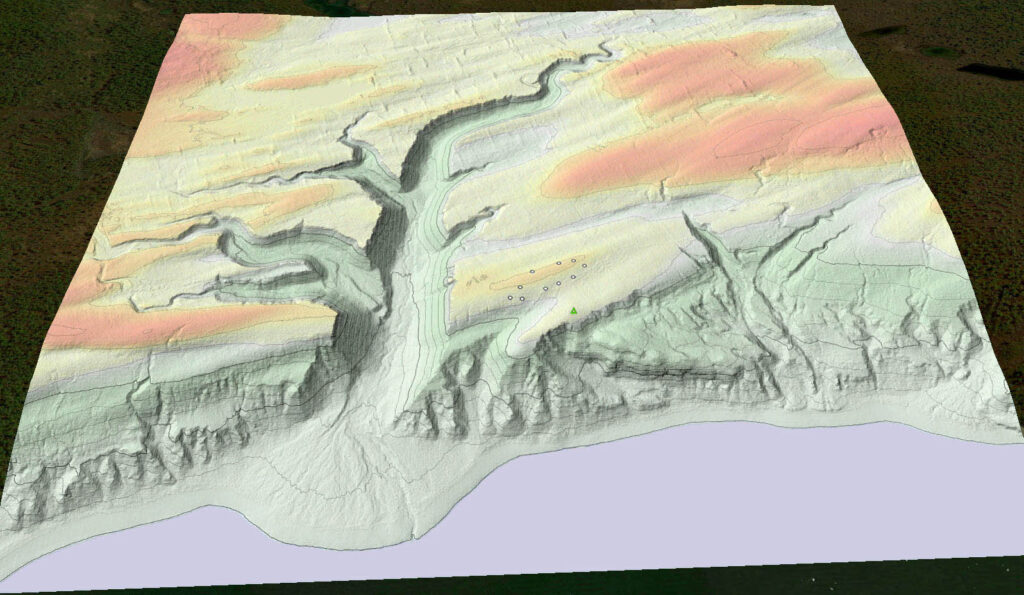

Examining the detailed LIDAR terrain surface in these images has been enlightening. There are multiple geomorphological stories at each site, one being that abandoned outwash channels and alluvial fans are everywhere. I still have to figure out how to control the display of the color gradient decorating the hillshade models in these images. I would prefer to have less of the unnatural cyan color, but have found it difficult to get rid of without resorting to Photoshop. It’s always good to have a goal.
